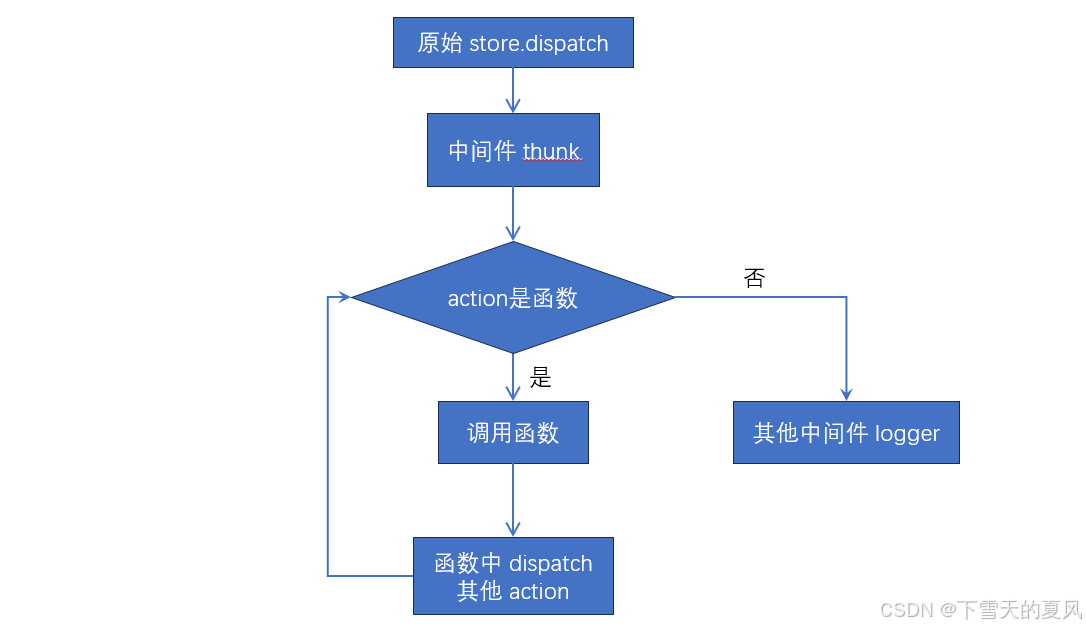阅读量:2
目录
1,介绍
一般情况下,action 是一个平面对象,并会通过纯函数来创建。
export const createAddUserAction = (user) => ({ type: ADD_USER, payload: user, }); 这样是有一些限制的
- 无法使用异步的,比如在请求接口之后再做一些操作。
- 或根据条件,同时
dispatch多个action。
而 redex-thunk 中间件的作用:允许 action 是一个函数,而不是一个平面对象。
举例
React@4.x 版本使用 redux-thunk@2.4.2 版本。
export const createAddUserAction = (user) => ({ type: ADD_USER, payload: user, }); export const createSetLoadingAction = (isLoading) => ({ type: SET_LOADING, payload: isLoading, }); export const fetchUsers = () => { return async (dispatch) => { dispatch(createSetLoadingAction(true)) const res = await getAllUsers(); dispatch(createAddUserAction(res)) dispatch(createSetLoadingAction(false)) } } // 使用 import { createStore, applyMiddleware } from "redux"; import thunk from "redux-thunk"; import { fetchUsers } from "./action/userAction"; const store = createStore(reducer, applyMiddleware(thunk)); store.dispatch(fetchUsers()) 这个函数有3个参数:
dispatch,就是store.dispatch;getState,就是store.getState;extra,设置的额外的参数。
2,原理和实现
整体流程:

实现
中间件的写法参考 这篇文章
function thunkMiddleware(extra) { return (store) => (next) => (action) => { if (typeof action === "function") { return action(store.dispatch, store.getState, extra); } return next(action); }; } const thunk = thunkMiddleware({}); thunk.withExtraArgument = thunkMiddleware; export default thunk; 3,注意点
因为 redux-thunk 会修改 action 的类型,所以书写顺序通常会作为第一个。
以上。
